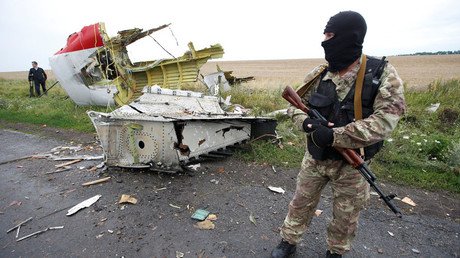‘Dutch-led team accepted secret US data on MH17 crash, rejected transparent Russian analysis'

The Dutch-led researchers drew conclusions from a one-sided deterministic approach, says Laszlo Maracz, an assistant professor of European Studies at the University of Amsterdam. Maracz says an independent tribunal would have avoided conflict of interest.
The criminal investigation into the fate of flight MH17 has been released this week to considerable criticism from political analysts who say the Dutch-led Joint Investigation Team (JIT) was flawed from the very beginning by allowing Ukraine, one of the prime suspects in the downing of the ill-fated aircraft, to participate.
The methods of collecting evidence, mostly sifted from the internet and social media accounts, were also questioned.
The preliminary report concludes that a surface-to-air BUK missile fired from a rebel-held area in eastern Ukraine downed the Malaysian passenger jet. It goes on to say the launcher was driven to Ukraine from Russia, and returned to Russia following the incident.
The findings of the report are largely based on photos from social media as well as phone conversations allegedly intercepted by the Ukrainian secret services.
RT: The BUK manufacturer says it shared the findings of its own investigation but these were ignored by the JIT. Can that really be the case in such an important case? Why would the JIT prefer evidence gathered online to evidence provided by the maker of the implicated missile?
Laszlo Maracz: I think it is interesting to see that during the press conference of the JIT several times there has been made a reference to a secret American investigation that should support the outcomes of the JIT investigation. But of course, it is a state secret, so it is a bit difficult to include a secret report and investigation and to make an issue of it, and to ignore the evidence and the material that have been offered by the Russian party. And at the same time saying that even if these materials are included in the investigation, the conclusions will not be changed. So, on one side we will have not enough insight into what the investigation is based on. And on the other hand, we will have open evidence offered by the Russian party that is not taken into account. We have a clear asymmetry in the research and the selection of the material.
James O'Neill, Australian barrister and international lawyer commented on the issue:“It is a fundamental principle of any kind of criminal investigation that it is done independently of the people who may be said to be involved. And we have had here right at the outset the involvement the Ukrainian police and the security services when Ukraine is clearly one of the prime suspects for being responsible for shooting down the plane.”
“The Dutch-led investigation gave Ukraine – one of the prime suspects – the right to veto anything they did not like in the report. This has not been addressed by the Dutch authorities. One cannot have any confidence in these kinds of secret agreements that were entered into in 2014 and which have been carefully not reported by the Western media ever since.”
RT: How did you react to the results of the investigation presented?
LM: I think there are several weak spots in this investigation. First of all, I think it is extremely unfortunate, especially if you take into account the relatives and the family of the victims, that the whole investigation has not been executed by an independent forum, an independent tribunal or something similar. So, stakeholders and victimized countries are included in this research team. I think for the objectivity it would have been much better to do it differently. And this means that this investigation is suffering from this drawback from the beginning.
The second thing that struck me in this presentation is that it is basically a reconstruction where you see that tapes, internet pictures and images, internet material in social media have been connected. It means that it is an extremely difficult type of research. I am not convinced as a scientist that it is possible by doing this sort of internet research that you will find the truth. It is more likely that you will have a range of possibilities… Because you can upload a picture that has been made a few months ago and you put it on the social media, so you cannot make the conclusion that the picture reflects reality on the day it is seen on the social media. It means that a lot of scenarios are possible. A lot of reconstructions are possible. And we don’t know what the scientific foundation is by doing this sort of research by the internet… It is unclear what the precise value of this data is. Especially, when you try to link them and to connect them. I see a scientific drawback in this sort of research.
It can be circumstantial evidence at most, but not direct evidence. The JIT has done a lot of work and they collected a lot of data, but they were also driven by one-sided hypothesis. The whole research is very deterministic.
Unnamed eyewitnesses, anonymous phone call interceptions & more flaws that raise doubt over intl #MH17 inquiry https://t.co/aedxOcn8Pt
— RT (@RT_com) 29 сентября 2016 г.
The statements, views and opinions expressed in this column are solely those of the author and do not necessarily represent those of RT.













